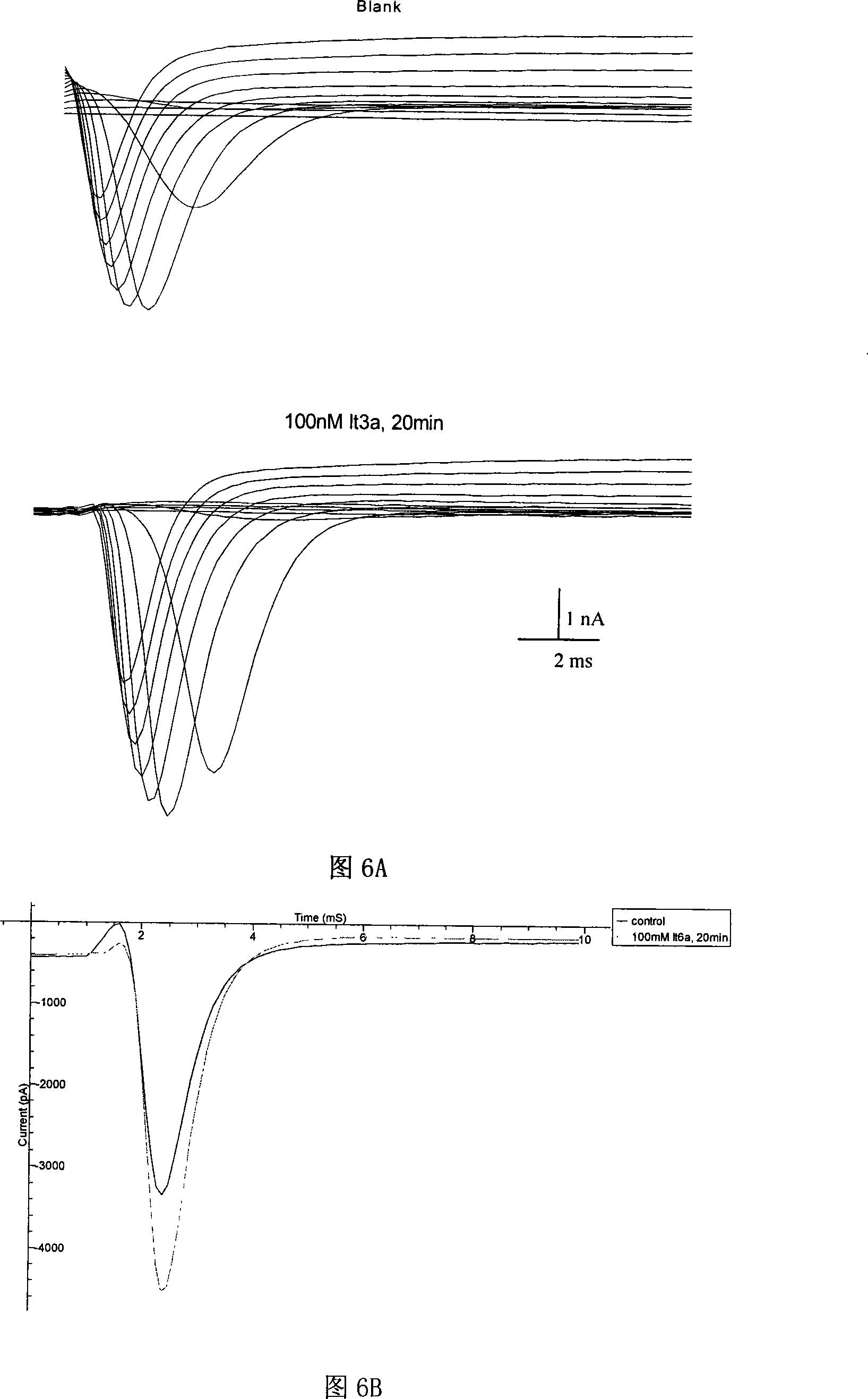Chinese South China sea signal conus neurotoxin gene Lt3.1 and uses thereof
A neurotoxin, amino acid technology, applied in nervous system diseases, non-central analgesics, medical preparations containing active ingredients, etc.
- Summary
- Abstract
- Description
- Claims
- Application Information
AI Technical Summary
Problems solved by technology
Method used
Image
Examples
Embodiment 1
[0044] Embodiment 1: Construction and identification of signal cono venom tube cDNA library:
[0045] Extraction of total RNA and synthesis of cDNA: Isolate the venomous tubes of the signal cone snail in the South China Sea, and extract the total RNA of the virulent tubes according to the instructions of Gibco BRL's TRIZOL LS reagent. Take 1 μg signal cone venom total RNA with SMART III olignuclotide (5'-AAGCAGTGGTATCAACGCAGAGTGGCCATTATGGCCGGG-3') and CDS III / 3'PCR primer (5'-ATTCTAGAGGCCGAGGCGGCCGACATG-d(T) 30 N -1 N-3') was reverse transcribed to synthesize the first strand to obtain 10 μl of cDNA first strand product.
[0046] Construction and identification of the cDNA library of the signal cono virulence tube: 1.5 μl of the cDNA was used for the ligation reaction, and plated after transformation. Single clones were picked from the plate for preservation and a certain number of single clones were randomly picked for sequencing and bioinformatics analysis.
Embodiment 2
[0047] Embodiment 2: Crude poison extraction of signal cone snails:
[0048] Freshly isolated venom tubes were placed in Petri dishes and crude venom was obtained in three different ways. 1) Extrusion method. Pinch one end of the venom sac and squeeze the slurry out of the venom tube. 2) Homogenization method. After dissecting the poisonous tube and poisonous sac, put it in a beaker in ice bath, and crush it with a homogenizer. 3) Liquid nitrogen grinding method. Add liquid nitrogen to the mortar to grind the poison tube and poison foam into powder. The venoms obtained by the three methods were respectively extracted in 1.1% acetic acid buffer solution, and the supernatant was collected by repeated centrifugation, and immediately applied to gel chromatography or stored at -20°C for freezing.
Embodiment 3
[0049] Embodiment 3: Gel chromatography separation and purification
[0050] The crude poison extracted in Example 2 was preliminarily separated with a Sephadex G-25 chromatographic column (balanced with 1.1% acetic acid solution) at a flow rate of 1 ml / min. The chromatogram of the signal cone snail crude virus separated by Sephadex G25 is shown in Figure 1. Collect each elution peak, then use SDS-PAGE electrophoresis to determine the approximate molecular weight of the components contained in each peak, and the results are shown in Figure 2.
[0051] The collected peaks were adjusted to pH 8.8 with Tris-HCl, and then loaded onto Q sepharose highperformance anion-exchange columns (20×2.6 cm, pre-balanced with 50 mM Tris-HCl solution of pH 8.8) for ion-exchange chromatography, The breakthrough peak was collected simultaneously; the flow rate was 1 ml / min. Gradient elution was carried out with 0-1M NaCl solution, and each elution peak was collected. Among them, the ion-exchan...
PUM
| Property | Measurement | Unit |
|---|---|---|
| molecular weight | aaaaa | aaaaa |
Abstract
Description
Claims
Application Information
 Login to View More
Login to View More - Generate Ideas
- Intellectual Property
- Life Sciences
- Materials
- Tech Scout
- Unparalleled Data Quality
- Higher Quality Content
- 60% Fewer Hallucinations
Browse by: Latest US Patents, China's latest patents, Technical Efficacy Thesaurus, Application Domain, Technology Topic, Popular Technical Reports.
© 2025 PatSnap. All rights reserved.Legal|Privacy policy|Modern Slavery Act Transparency Statement|Sitemap|About US| Contact US: help@patsnap.com



